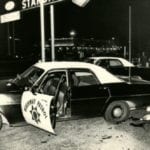 Mysteries
Mysteries  Mysteries
Mysteries  History
History 10 Surprising Stories About the Texas Rangers
 Humans
Humans 10 Philosophers Who Were Driven Mad by Their Own Theories
 Miscellaneous
Miscellaneous 10 Video-Game-Worthy Weapons and Armors from History
 Weird Stuff
Weird Stuff 10 Psychics Who Accurately Predicted Wartime Events
 The Arts
The Arts 10 Pieces of Art Inspired by a Broken Heart
 Health
Health 10 Science Fiction-Sounding New Medical Treatments
 History
History 10 Surprising Facts About the Father of Submarine Warfare
 Space
Space Ten Astonishing New Insights into Alien Worlds
 Weird Stuff
Weird Stuff 10 Bizarre Summer Solstice Rituals Still Practiced Today
 Mysteries
Mysteries Top 10 Haunting Facts About the Ghost Ship MV Alta
 History
History 10 Surprising Stories About the Texas Rangers
 Humans
Humans 10 Philosophers Who Were Driven Mad by Their Own Theories
Who's Behind Listverse?

Jamie Frater
Head Editor
Jamie founded Listverse due to an insatiable desire to share fascinating, obscure, and bizarre facts. He has been a guest speaker on numerous national radio and television stations and is a five time published author.
More About Us Miscellaneous
Miscellaneous 10 Video-Game-Worthy Weapons and Armors from History
 Weird Stuff
Weird Stuff 10 Psychics Who Accurately Predicted Wartime Events
 The Arts
The Arts 10 Pieces of Art Inspired by a Broken Heart
 Health
Health 10 Science Fiction-Sounding New Medical Treatments
 History
History 10 Surprising Facts About the Father of Submarine Warfare
 Space
Space Ten Astonishing New Insights into Alien Worlds
 Weird Stuff
Weird Stuff 10 Bizarre Summer Solstice Rituals Still Practiced Today
10 Ignored Warnings That Were Tragically Deadly
We humans have experienced an uncountable number of deadly disasters, both natural and man-made, that led to massive loss of life and property since time immemorial. Many such disasters also caught those affected unaware, even though they certainly didn’t just come out of the blue. There were warnings, which were clearly ignored.
10 The Eruption Of Mount Vesuvius
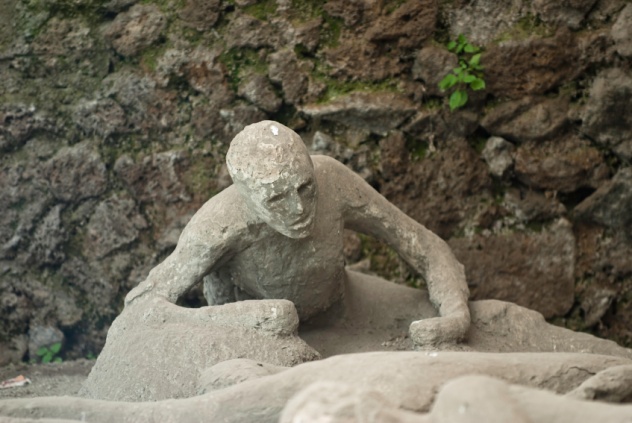
The eruption of Mount Vesuvius on August 24, AD 79, killed a number of people and totally destroyed the ancient Roman city of Pompeii. All of the victims of the eruption were caught unaware, though that shouldn’t have been the case, as the mountain had given several warnings, all of which went completely ignored.
Pompeii was not the first town to be destroyed by the eruption of mountain Vesuvius. There had been at least two previous towns, both of which were completely destroyed. Leading up to the day of the eruption, Pompeii experienced series of tremors caused by an increase in the molten rock below Mount Vesuvius. The Romans didn’t know the relationship between such quakes and an impending eruption, so they can’t be blamed for that. On the more superstitious side, Romans believed that sighting giants roaming around a town was an early warning of an impending disaster. Many people living in Pompeii reportedly sighted giants, but no one bothered to find out why.
As the date of the eruption drew closer, the mountain, which had been dormant, began to make groaning sounds, and the sea around the Bay of Naples became so hot that it boiled and produced bubbles. Animals, including rats, left the town in droves, while wells and streams, especially those close to the mountain, mysteriously dried up. The people of Pompeii ignored these obvious warnings. (They blamed the hot weather for the dried wells.)
9 The Sinking Of The Lusitania
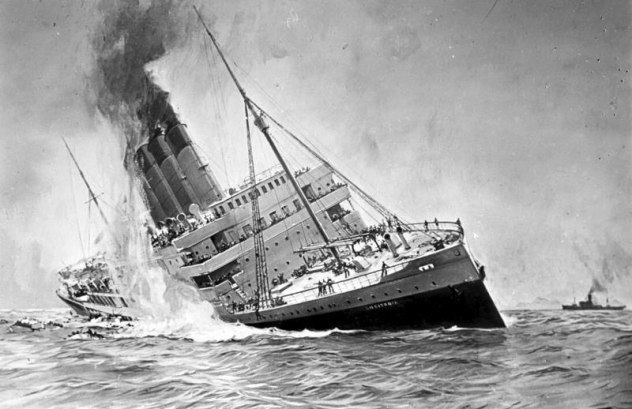
The sinking of the British RMS Lusitania by a German U-boat during World War I wasn’t supposed to be unexpected or surprising, since Germany had ran several advertisements in The New York Times, warning of the ship’s impending doom. The advertisements ran for several weeks until the morning of the day that the Lusitania left the United States. That day, it even appeared on the same page that informed people of the ship’s departure back to England from New York.
The British government also warned the captain of Lusitania to avoid areas around the British shore where German U-boats were active and that if he ever passed such areas, he should zigzag his way through. The captain received more warnings as he entered just such an area, but for some reason, he ignored them and slowed the ship down. He also stayed too close to the shore and refused to zigzag, all of which made the Lusitania the perfect target. The ship was torpedoed, and 1,195 people were killed.
8 The 2004 Indian Ocean Tsunami And Earthquake
More than 230,000 people were killed, 500,000 were injured, and 1.7 million were left homeless on December 26, 2004, after 9.2-magnitude earthquake caused a tsunami that affected 14 countries in Asia and eastern and southern Africa. The incident remains one of the deadliest natural disasters in recorded human history. The death toll could have been less had warnings been heeded.
Seven years before the earthquake and subsequent tsunami, a top government official in Thailand warned that the country would soon be hit by a tsunami. His calls were ignored, and he was termed “crazy.” He was also banned from entering some parts of Thailand, where he was considered a threat to tourism.
The Pacific Ocean Tsunami Warning System also called the embassies and government officials of several Asian countries after the earthquake and warned that they were at risk of a possible tsunami. Many countries ignored the warning, and even those that listened didn’t take any tangible action. Many countries still ignored the threat when it hit their outlying coasts and even refused to warn people living in the inlying coasts. In Indonesia, the sea receded several hundred meters after the earthquake. That was a clear warning of an incoming tsunami, but many didn’t know this, and some even ran into the retreated ocean to catch stranded fish, while others simply looked on and wondered what was happening.
7 The Bombing Of Pearl Harbor
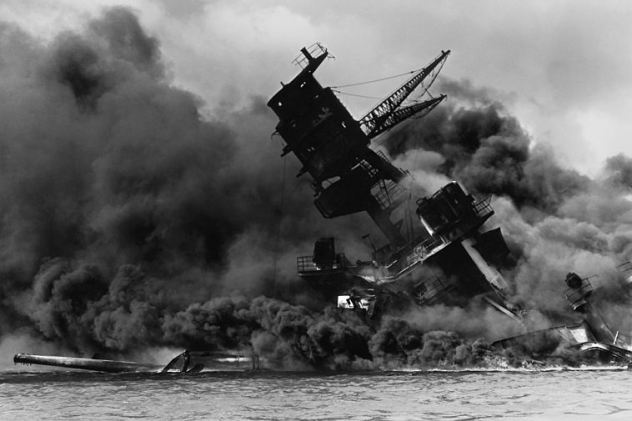
The Japanese bombing of Pearl Harbor drove the United States into a certain fracas called World War II. Before the attack, Japan was known to be gathering intelligence on the US military and carrying out reconnaissance operations along the US coast. Three days before the attack, President Franklin Roosevelt was warned that Japan was staging an attack on US soil.
Long before then, General William Billy Mitchell, a former US Army officer, had also warned that Japan would launch unexpected attacks on Hawaii, Alaska, and the Philippines without declaring war. The US ignored all these warnings and was so confident that Japan would never attack that they even put a pilot who wasn’t skilled in radar operations in charge of a radar station observing the part of the ocean from which the attack came.
When the pilot was told that some large blips, which could only mean that a massive air fleet was approaching, had appeared on the radar, he told the operators not to worry about them. They didn’t, and 2,459 servicemen ended up dead. Conspiracy theorists, however, believe that President Roosevelt deliberately allowed the Japanese attack Pearl Harbor so that the US could have a legitimate reason to get involved in the war.
6 The Eruption of Mount Tarawera
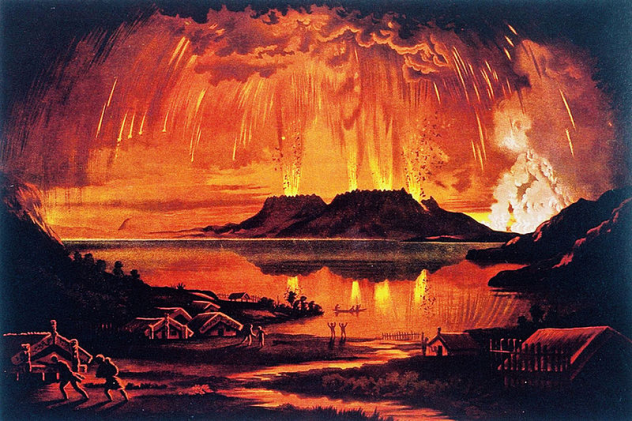
On June 10, 1886, Mount Tarawera in New Zealand erupted, leading to the deaths of about 120 people and the total destruction of several native Maori villages. Before the eruption, the lake around the mountain experienced rapid increases and decreases in its water volume, while the rocks released hot water, both of which are signs of increasing volcanic activity.
Much like the Roman belief about giant sightings, the Maori believed that seeing a spirit canoe called waka wairua sailing over the lake was a sign of an impending disaster. Several European tourists reportedly saw the canoe, which was believed to transport the souls of the dead to the mountains. They gave independent accounts, and one of them even made a sketch of the boat. Some of them also waved at the boat but received no response. They didn’t think much of it until they were informed that there was no such boat on the water.
When Mount Tarawera erupted, many were caught unaware, and some even thought they had come under attack by the Russian Navy.
5 Operation Barbarossa

Operation Barbarossa, Hitler’s invasion of the Soviet Union, began on June 22, 1941, and left 775,000 German soldiers and at least 800,000 Soviet soldiers dead. It also marked the entry of the Soviet Union into World War II. Germany’s assault was so swift and surprising that the Germans almost captured Moscow and were only stopped by the deadly Soviet winter, which changed the tide in favor of the Soviets. Swift or not, the attack shouldn’t have been surprising, since Josef Stalin received more than 100 warnings about Germany’s intention to attack.
Stalin was aware that Germany had been massing troops at Soviet borders but had been assured by Hitler that the troops were massed there to protect them against British bombing, although it was well-known that Germany was winning the war. The head of Soviet intelligence who also warned Stalin of Germany’s intention to invade, but he ended up shot. Several Soviet spies also had their warnings ignored.
During the final 10 days before the invasion, Soviet intelligence issued Stalin 47 warnings and even predicted the day of the assault. Soviet sentries at the border also captured hundreds of German spies, who confessed that Germany would attack the Soviet Union on June 22. Polish women also shouted, “Soviets, Soviets, the war is coming!” and, “Soviets, the war will start in one week!” to Soviet troops across the border. Three days before the attack, Soviet aerial reconnaissance revealed that German tanks and artillery were all around Soviet borders, yet Stalin still did nothing.
4 Iraq’s Invasion Of Kuwait
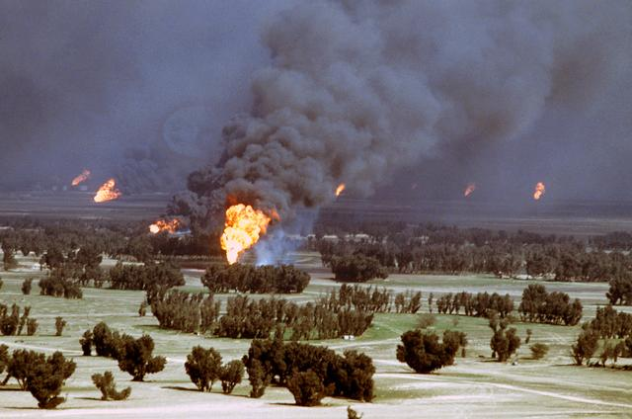
During the early morning hours of August 2, 1990, more than 100,000 Iraqi soldiers crossed the Iraqi border into Kuwait. The Kuwaiti ruler fled into the desert, and by morning, Iraqi troops were in control of the capital. The assault was a surprise to many and for no good reason. It had been in the works for at least five years and was just one phase of Saddam’s futile attempt to lay his sticky hands on Saudi Arabian oil wells.
The CIA and US military intelligence had warned the US government about the impending invasion, but the it chose to ignore the warning and even gave Saddam a $1.2 billion loan two days before the invasion. The US refusal to take a stand against the invasion was even one of the reasons that Saddam attacked, as he believed it was a sign that the US supported him. The US was so unprepared that warships sent to intervene had to wait for four days so that maps of Kuwait and Iraq could be loaded onto their computers.
Iraq was only expelled from Kuwait after a US-led United Nations contingent landed in Kuwait, marking the beginning of the Gulf War. By the time the war was over, 25,000 Iraqi soldiers were dead along with 248 UN troops (most of whom were from the US) and 100,000 Iraqi civilians. One million more Iraqi civilians would later die in the following years due to the sanctions imposed on Iraq.
3 The Challenger Disaster
On January 28, 1986, the Challenger space shuttle exploded over the skies of Florida while being watched by millions of people on the ground and on live television. The explosion was caused by the formation of ice around the space shuttle’s O-rings, which were used to separate the rocket boosters from the shuttle.
Of course, there were warnings. This time, they came from Bob Ebeling, an engineer who worked for the company that produced the booster. He had warned that the extremely cold weather would prevent the O-rings from sealing properly and would cause an explosion. He and another engineer then requested that the shuttle’s launch be delayed until the weather was favorable. The delay was initially granted but was later dismissed by executives, who were under pressure to get the shuttle into the space, as the launch had already been delayed six days.
When Bob complained, one of the executives told him that the Challenger was “not his burden to bear.” The shuttle took off against Bob’s insistence only to explode in midair 73 seconds after takeoff. Seven astronauts, one of whom was a teacher who had won a seat on a NASA educational program, were killed in the accident.
2 Rwandan Genocide
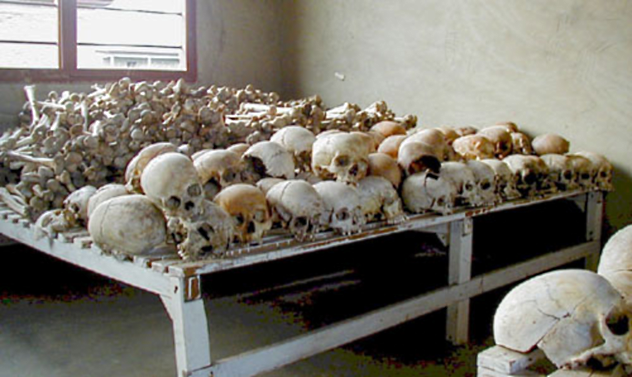
The Rwandan genocide was the well-planned ethnic cleansing and massacre of 800,000 Tutsis and “moderate” Hutus in Rwanda. The genocide, which began on April 6, 1994, was orchestrated by Hutu tribesmen, who not only attacked the Tutsis, but also any of their own tribesmen who protected them.
The genocide had been in the works since at least 1992, when the Belgian ambassador to Rwanda warned that the Hutus were preparing for an ethnic cleansing. Another Belgian, Professor Filip Reyntjens, also appeared before the Belgian senate and warned that the Hutus were operating death squads. He even mentioned one of their leaders as Rwandan Army Colonel Theoneste Bagasora, who would later command the genocide.
In January 1994, the commander of UN troops in Rwanda, General Romeo Dallaire from Belgium, also sent a fax, now known as the “genocide fax,” to the UN, wanring that the Hutus had plans to wipe out the Tutsis. He requested more troops and permission to attack a Hutu arms cache. The UN turned down his requests and instead told him to inform the Rwandan government, which was filled with the same people planning the genocide. That same month, Dallaire seized an arms cache, which was placed in custody of United Nations and Rwandan troops—the same Rwandan troops who were training the rebels who perpetrated the genocide.
1 World War II
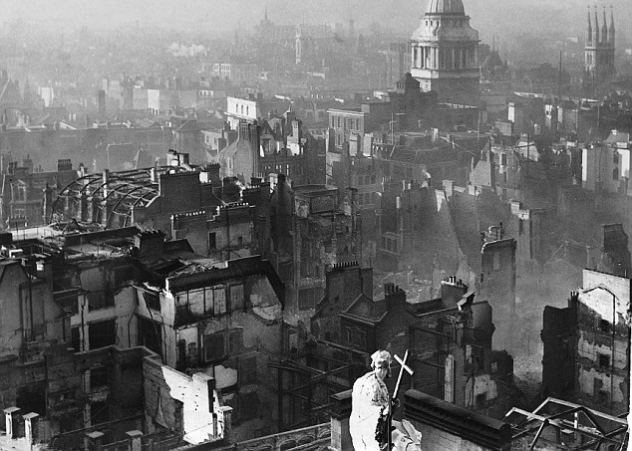
World War I officially ended in 1919 with the Treaty of Versailles, which was meant to ensure that Germany didn’t have enough money to start another war. Instead, it achieved the opposite result and caused Germany to start another war. The treaty blamed Germany for World War I and required them to pay the equivalent of a 100,000 tons of gold as restitution. This angered the Germans, who, aside from being forced to pay a huge sum, were also forced to accept the guilt for the war.
The German economy soon went into disarray and was crushed by serious inflation and unemployment, which a suspension and reduction of the debt was not enough to calm. This was one of the points that the Nazis used for their propaganda. When Hitler came into power, he refused to pay anything ever again.
Only a few people could see the inevitable results of the treaty at the time it was signed. One was an economist named John Maynard Keynes, who stated that the treaty was dead on arrival. Another was Field Marshal Ferdinand Foch, a French army commander, who warned that the treaty was not the end of the war but rather a suspension of it. While the treaty was signed, he said, “This is not peace; it is an armistice for 20 years.”
He was right, as Germany attacked 20 years later. Foch also warned that Germany would be much more formidable when they launched another war and that they would invade France and stage attacks into England from there. The Germans did just that, and by the time they were through, almost 50 million people were dead.







